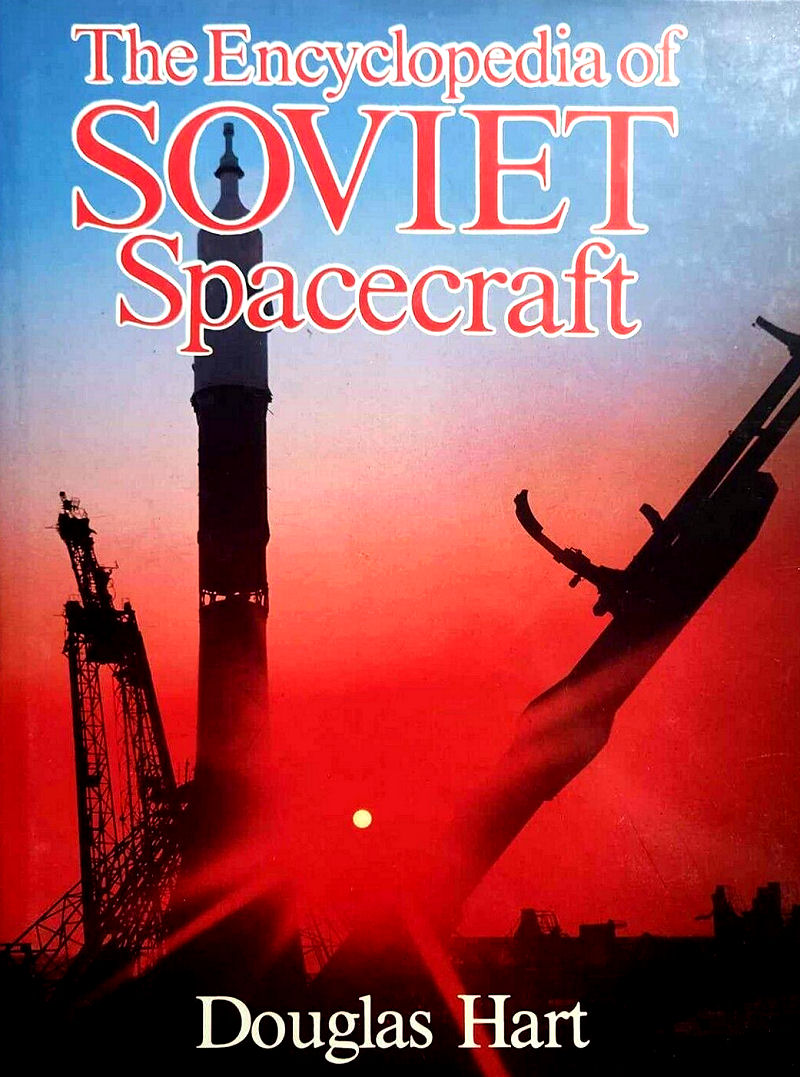 Story: After a brief introduction on the dawn of the Soviet space program and its pioneers, this book offers a concise, launch-by-launch, mission-by-mission catalog of the entire space program through 1987. Launch sites and dates, crew rosters, and mission accomplishments are noted, along with a surprising number of photos and diagrams. In some cases, though, the mission details and even the physical details of the craft are still conjecture, despite the author’s best efforts, due to the secretive nature of the Soviet space program at the time.
Story: After a brief introduction on the dawn of the Soviet space program and its pioneers, this book offers a concise, launch-by-launch, mission-by-mission catalog of the entire space program through 1987. Launch sites and dates, crew rosters, and mission accomplishments are noted, along with a surprising number of photos and diagrams. In some cases, though, the mission details and even the physical details of the craft are still conjecture, despite the author’s best efforts, due to the secretive nature of the Soviet space program at the time.
Review: This book urgently needs updating.
I found “The Encyclopedia Of Soviet Spacecraft” quite unexpectedly while doing a bit of used book browsing, and my curiosity was piqued to say the least. If you’ve spent any time visiting this site, you’ll know that I’ve read and reviewed gobs of technical, historical and autobiographical texts on the U.S. space program, and on humanity’s push into space as a whole. But never before had I seen a book so detailed in its focus on the other half of the space race.
I admire the author’s even tone throughout the book – he assumes that the reader knows about the Cold War, about the political fires fueling the race for space supremacy, and so on. The listing of the Soviets’ many Earth observation satellites dispassionately notes which were likely on military or spying missions, and moves on without moralizing about it. (It’s kind of difficult to moralize, after all, when some of the photos of the Soviets’ launch facilities early in the book were taken by American spy satellites.) This book is a dream for pure research – if a mission failed, it was because a booster stage failed to fire, or a parachute failed to open, and there’s nothing flowery about reaching too high, too soon. The author doesn’t present his politics anywhere in the book, and that’s a relief, because more space can be devoted to the interesting stuff.
And interesting it most certainly is. I learned a lot of things here that I had never seen, heard or read anywhere else. It’s easy to see in hindsight, of course, but the book offers fascinating hints that many of the most problematic manned missions in Soviet space history were presaged by earlier missions that were plagued by similar problems – though in some cases the problems proved to be fatal the second time around. (The dark thought of “oh yeah, we had noticed that foam was falling off of the external tanks during previous shuttle launches…” occurred to me more than once while reading these sections.)
But if anything gets me about “The Encyclopedia Of Soviet Spacecraft”, it’s the fact that it apparently hasn’t been updated since the fall of the Soviet Union. This book ends with tantalizing hints that the Soviets may be working on a close copy of the U.S. space shuttle, and the most recent accomplishment noted is the launch of the Mir space station. The fall of the Soviet Union, the mothballing of the Buran shuttle program, the life and death of the Mir station, and the Russians’ new vital role in the International Space Station all make for very nice bookends to the story that emerges, sometimes in a dry and technical manner, in these pages. There’s also the subsequent declassification of the Soviet’s abortive push for the moon, which all but demands its own brand new chapter, if not a separate book. In short, this book begs for updating and expansion, and all of that new information would probably even make it possible for the author to conduct a more analytical overview of Soviet space history (if he wanted to do so).
It’s an utterly fascinating book, and it’s very hard to fault the book or its author for that. The only problem with it now is that, as it stands, it’s only telling half the story – and the story that remains untold is as fascinating as what “The Encyclopedia Of Soviet Spacecraft” has already shown us.
Year: 1987
Author: Douglas Hart
Publisher: Bison Books
Pages: 192 pages




